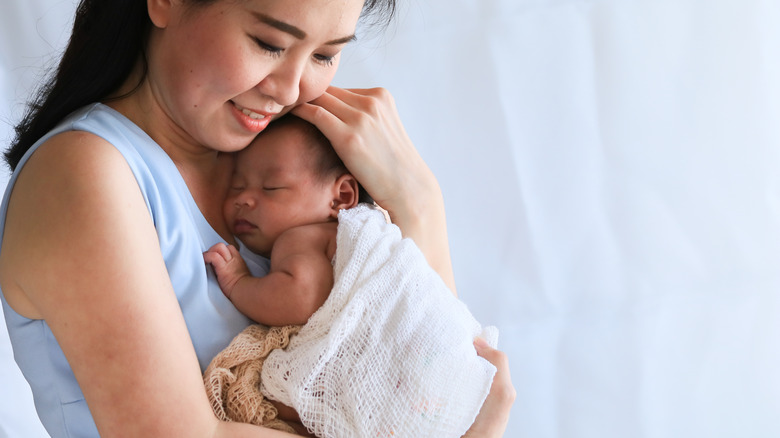There is plenty of anecdotal advice about getting your crying baby to sleep that includes taking them car rides to rocking them to sleep. When babies cry and have difficulty falling asleep, it increases stress on the infants and parents. In fact, the Sleep Foundation reports that new mothers can lose up to an hour of sleep each night after giving birth. They are also at risk for developing insomnia, fatigue, anxiety, and postpartum depression.
A new study may provide hope for parents struggling with crying babies. The research, published in the journal Current Biology, involved 21 mothers who tried several different techniques to soothe crying babies to sleep. The methods included walking and holding, sitting and holding, placing the baby in a cot, and pushing the infant in a stroller. The results showed that getting a crying baby to sleep may come down to a relatively simple technique and two numbers: five and eight.
The secret to helping your baby go to and stay sleep

The method that proved to be the most successful was walking with the baby for five minutes followed by holding for eight minutes. When sleeping infants were placed in their beds without being held quietly, they woke up again, highlighting the importance of holding a sleeping baby for several minutes before laying them down. The research also indicates that movement is key to getting babies to fall asleep. Researchers found that none of the babies were crying after five minutes of being held while their mothers walked, and 45.5% experienced a slower heart rate and fell asleep. This technique even worked during daytime hours.
When walking, parents should hold their baby snugly against their bodies, support their heads, and walk on a flat surface at a steady pace without any sudden stops or turns. Researchers pointed out that this technique provides an immediate calming effect for crying babies when other methods don’t work. Interestingly, this method did not work as well for infants who were not already crying. Researchers explained that crying babies might be more tired than non-crying babies and were, therefore, more susceptible to what is called a “transport response.”



